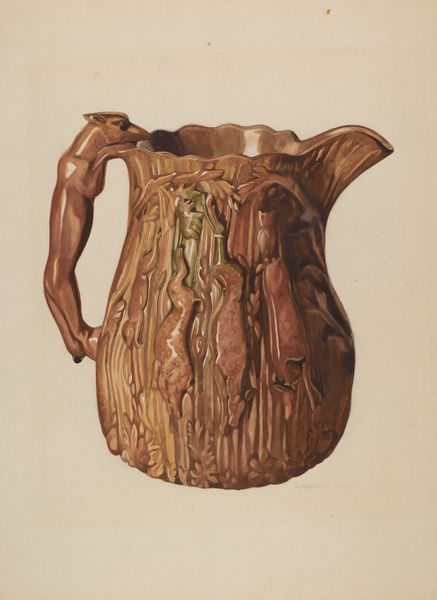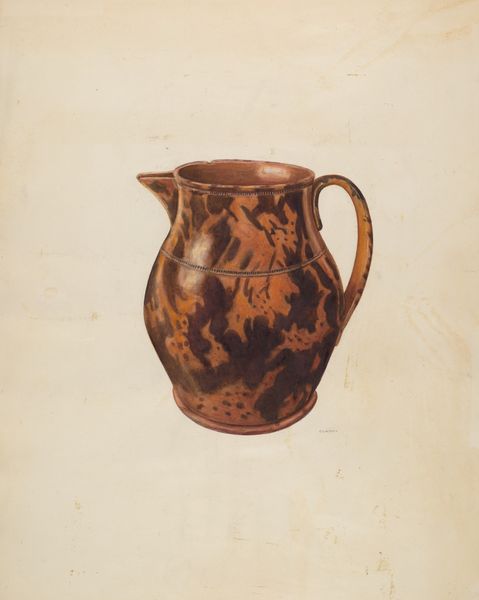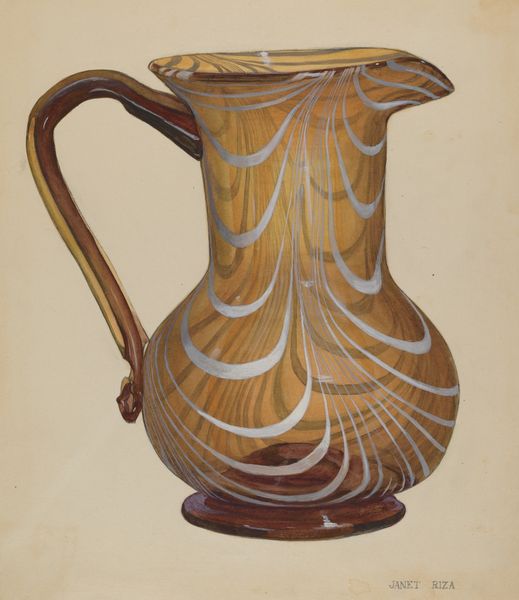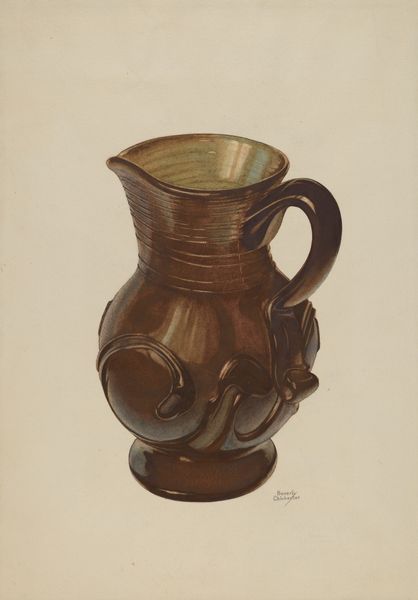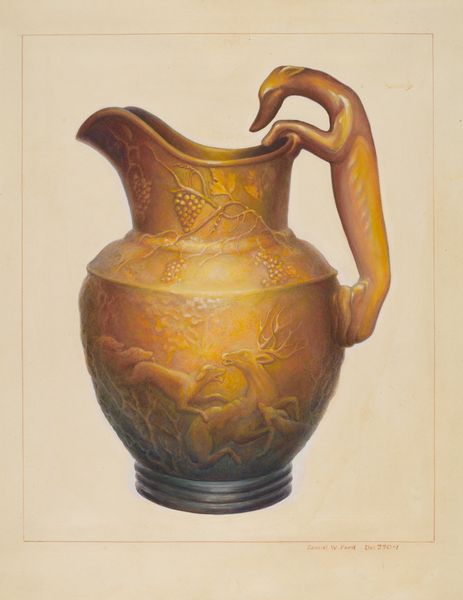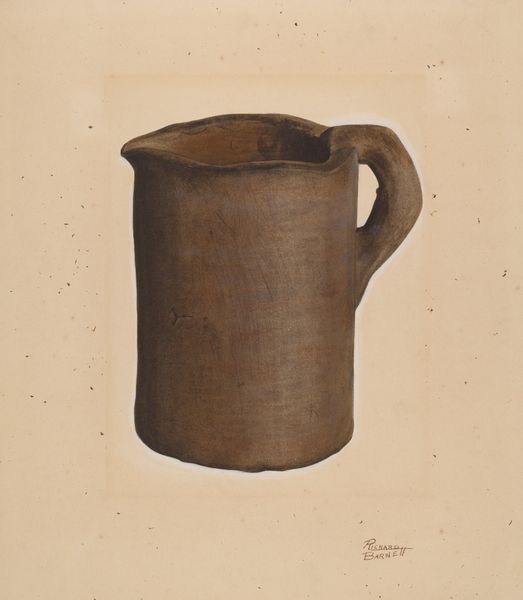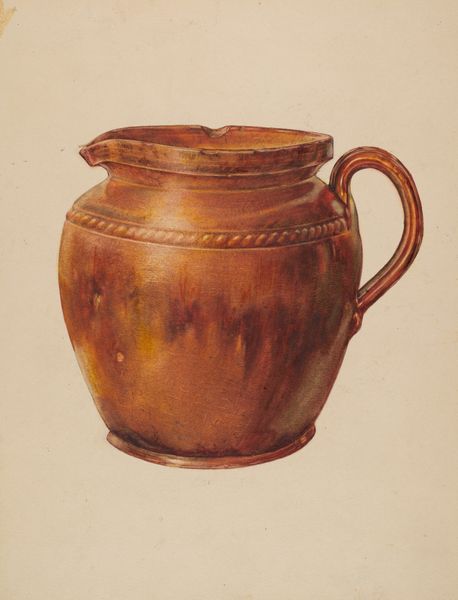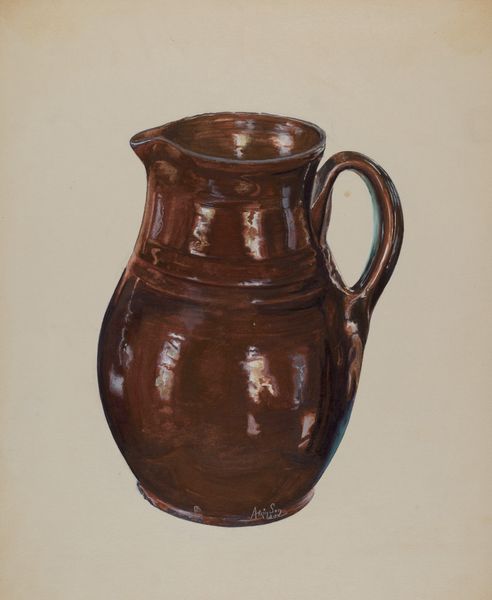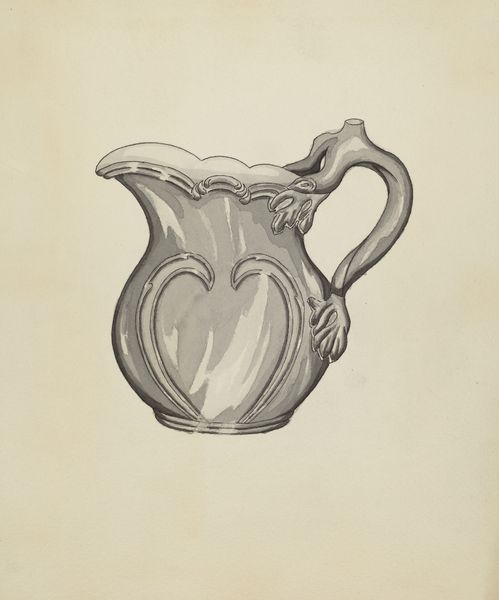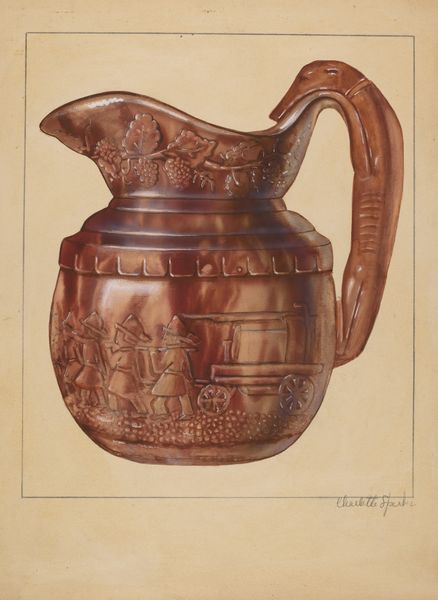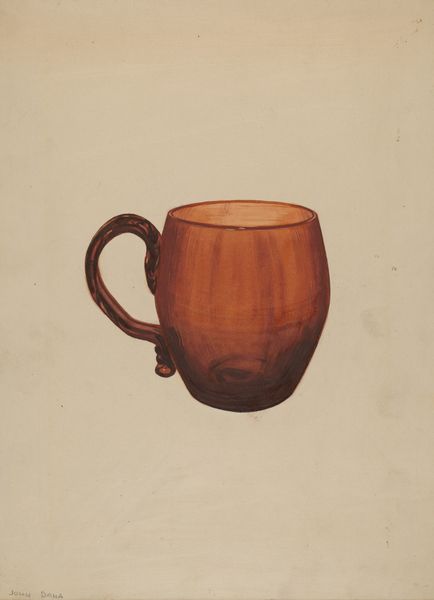
drawing
#
drawing
#
charcoal drawing
#
possibly oil pastel
#
charcoal art
#
oil painting
#
acrylic on canvas
#
coffee painting
#
underpainting
#
animal drawing portrait
#
portrait drawing
#
watercolor
Dimensions: overall: 28.9 x 22.1 cm (11 3/8 x 8 11/16 in.) Original IAD Object: 7 1/2" High
Copyright: National Gallery of Art: CC0 1.0
Curator: Allow me to introduce "Pitcher," a drawing attributed to Giacinto Capelli in 1937. The medium appears to be charcoal and possibly oil pastel on paper. Editor: The first thing that strikes me is the earthy palette. The piece evokes a sense of rustic utility. I’m also immediately drawn to the repeated motif of the stylized animals hanging on the side. It brings an intriguing tension between form and ornament. Curator: Indeed. Notice how Capelli uses subtle tonal gradations to suggest the volume and curvature of the pitcher. The composition adheres to a classical understanding of still life, yet there’s a clear attempt to infuse the object with dynamism. Look at how the animals almost appear to cascade down its form. Editor: Let’s consider what a utilitarian object signifies. The materiality of this object suggests a more rugged lifestyle, which contrasts with its delicate rendition here. Is the artist romanticizing the mundane by depicting it through such craftsmanship and precision? And I wonder what this form might have looked like in three dimensions. The execution of these bas-relief images in clay or terracotta might have brought forth an additional layer of artistic interpretation in skilled labor. Curator: It also provides, at a basic semiotic level, the artist’s hand, literally inscribed onto the base in stylized form, creating a compelling layer of authorship and emphasizing the idea of the "mark." What could be viewed as simply decoration I feel speaks to a commentary on cultural identity. Editor: Perhaps this drawing serves not just as representation, but also documentation. This level of craft embedded in functional ware is easy to take for granted without due consideration of labor. Curator: It serves as an exploration of the utilitarian form and speaks to a larger idea of the cultural symbolism imbued in even the simplest object. It's as though Capelli elevates a quotidian object into the realm of high art by framing the ordinary. Editor: This really highlights how labor transforms basic elements to enhance everyday existence and gives me a profound appreciation of process as a fundamental piece of the finished object.
Comments
No comments
Be the first to comment and join the conversation on the ultimate creative platform.


